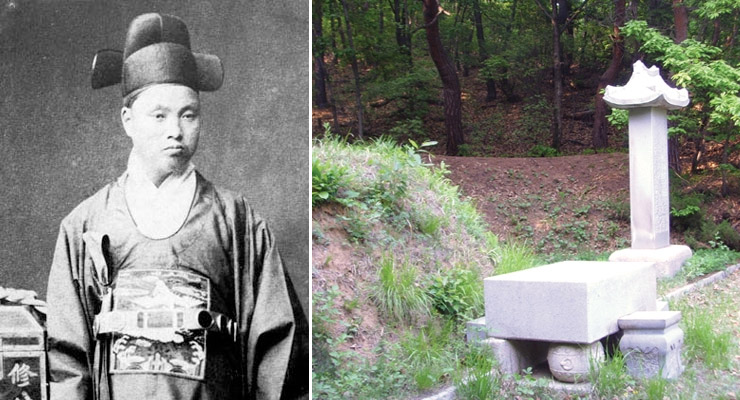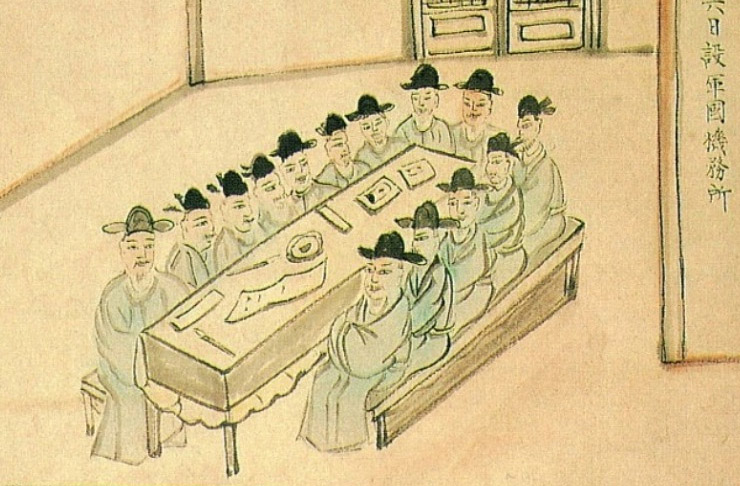
김홍집 (1842–1896)
온건개화파이며 갑오개혁 추진자들의 우두머리였다. 조선의 마지막 영의정이자 대한제국 최초의 내각총리대신이다. 1894년 동학혁명이 일어나 일본 세력의 침투가 표면화되자 그 힘을 빌어 제1차 김홍집 내각을 조직, 총리대신이 되었다. 그해 동학 농민 혁명이 일어나자 명성황후가 청나라군을 끌어들였고, 조선에 침투를 바라던 일본군은 청일 전쟁을 일으키기 며칠 전인 음력 6월 21일에 경복궁을 습격하고 무기고를 탈취하는 등 김홍집 일파를 지원하였다. 한편 김홍집은 일본 조정과 친하다는 이유로 음력 6월 말부터 제1차 김홍집 내각을 조직하고 총리대신이 되어 갑오개혁을 단행, 악습을 폐지하고 과거제 폐지, 은본위제의 신식화폐제도 채택, 의정부와 궁내부의 관제 시행, 도량형제도의 채택 등의 개혁을 단행했다.
[자세히보기]출처 : Wikipedia
Kim Hongjip (1842–1896)
In 1880, Kim Hong-jip undertook an official mission to Japan where he learned first-hand of the modernizing reforms taking place in that country and inspiring in him a desire to effect such changes in Korea. After the Gapsin Coup, he became the first vice-premier 'Jwauijeong' and entered into the Japan–Korea Treaty of 1885.
[Learn more]Source : Wikipedia
ⓗ Gabo Reform (1894-1896) / 갑오개혁

갑오개혁(甲午改革)
갑오개혁은 1894년 7월 27일부터 1895년 7월 6일까지 일제가 조선 정부에서 전개한 동학농민군과 맺었던 전주화약을 간섭한 제도 개혁을 말한다. 10년 전 갑신정변의 실패 후 망명했던 개화파들이 청일전쟁에 승리한 일본의 위세를 업고 돌아와 추진한 일본식 개혁으로서 갑오경장(甲午更張)이라고도 불렸다. 내각의 변화에 따라 제1차 갑오개혁과 제2차 갑오개혁으로 세분하며, 이후 을미개혁(제3차 갑오개혁)으로 이어지게 된다. 주요 내용은 신분제(노비제)의 폐지, 은본위제, 조세의 금납 통일, 인신 매매 금지, 조혼 금지, 과부의 재가 허용, 고문과 연좌법 폐지 등이다.
[자세히보기]출처 : Wikipedia
Gabo Reform
The Gabo Reform, also known as the Kabo Reform, describes a series of sweeping reforms suggested to the government of Korea, beginning in 1894 and ending in 1896 during the reign of Gojong of Korea in response to the Donghak Peasant Revolution. Historians debate the degree of Japanese influence in this program,[citation needed] as well as its effect in encouraging modernization. The name Gabo comes from the name of the year 1894 in the traditional sexagenary cycle.
[Learn more]Source : Wikipedia










 HOME
HOME


 0
0




